When fall arrives in Louisiana, alligators change in surprising ways. Watching these ancient creatures along the bayous is always a thrill.
As temperatures dip, their behavior shifts: feeding habits, basking spots, and activity levels all transform. These seasonal habits help them survive winter’s chill.
After years of observing, I’ve uncovered some incredible insights into how these reptiles adapt during fall. Stay tuned, what I’ve learned might just change how you see these remarkable animals!
Lazy Gator Days
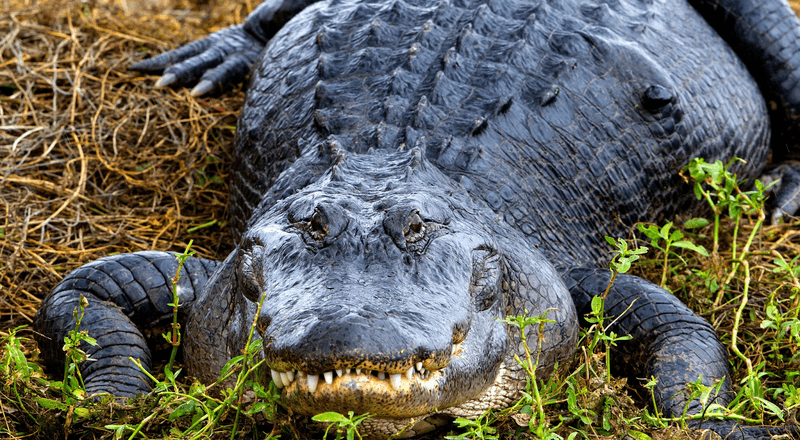
Ever notice how alligators seem more sluggish come October? Their metabolism dramatically slows as temperatures drop. Last fall, I watched a massive bull gator near Henderson barely move for three straight days!
Cold-blooded creatures depend entirely on external heat sources to power their bodies. When autumn chill sets in, their internal processes slow down to conserve energy. This metabolic downshift means they need less food and move around much less frequently.
For photographers and wildlife enthusiasts, this makes autumn an ideal time for observation.
Sunbathing Schedule Shift
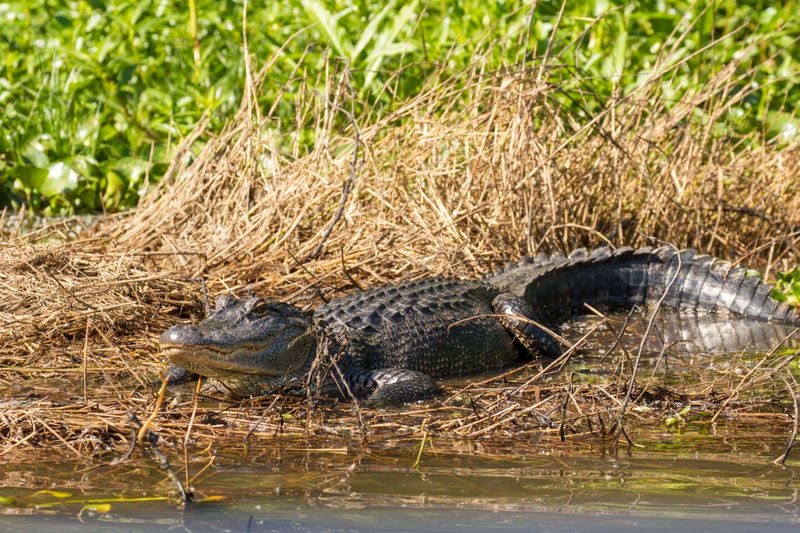
The morning fog lifted to reveal something I hadn’t expected: dozens of alligators sprawled across sun-drenched banks at noon. Autumn brings a fascinating change to their basking routines.
During summer, gators typically avoid midday heat, preferring dawn and dusk for cruising. But fall’s cooler temperatures flip this pattern.
They now emerge around midday when the sun reaches its peak, abandoning their crepuscular habits for more practical midday warmth-gathering.
This behavior makes autumn the perfect season for wildlife tours in Louisiana.
Appetite Adjustment
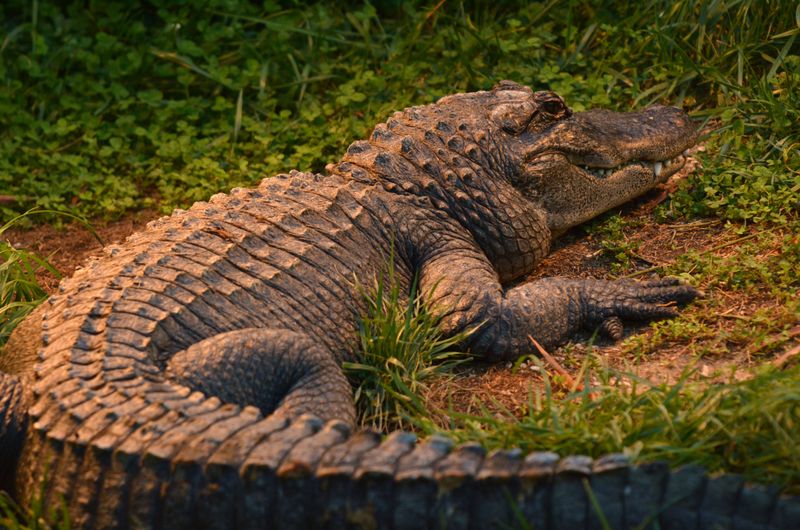
As temperatures decline, alligators’ digestion slows considerably. A summer gator might eat several times weekly, but autumn brings increasingly longer fasting periods. Their bodies simply can’t process food efficiently in cooler conditions.
By late autumn, some adults may go weeks without a meal as they prepare for winter’s semi-dormant state. This feeding tapering helps clear their digestive tract before the coldest months arrive.
Water Depth Preferences

Alligators seek deeper water bodies that retain heat better than shallow areas. Simultaneously, they’ll utilize sun-exposed shallows during daylight hours for quick warming.
This strategic movement creates a predictable pattern: mornings in sunny shallows, afternoons in deeper, thermally stable waters.
The behavior ensures they maintain optimal body temperatures despite the season’s fluctuating air temperatures.
Surface Time Reduction
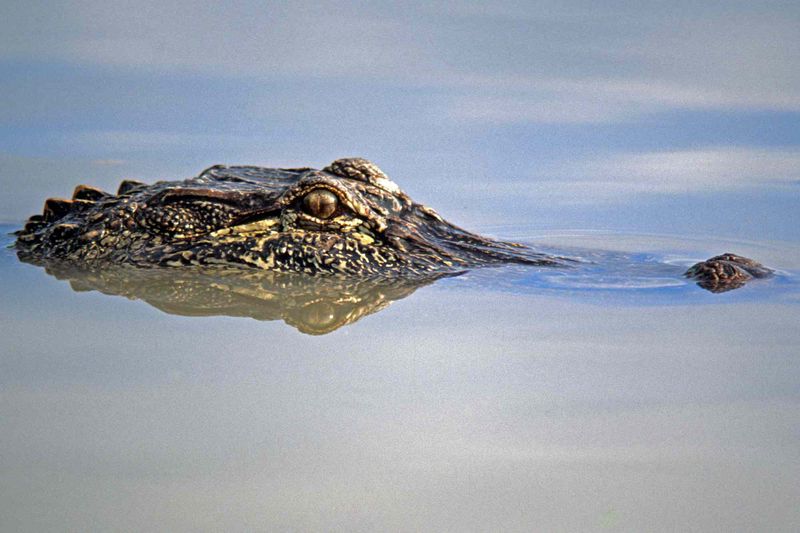
The stopwatch doesn’t lie, autumn alligators spend significantly less time with their nostrils above water.
My research log shows average surface intervals dropping from 17 minutes in summer to just 4 minutes by late October.
Cooler water actually retains heat better than air during fall, so gators minimize exposure to chilling breezes. They’ll emerge briefly for air, then quickly submerge again where temperatures remain more stable.
When they do leave the water, they spend longer periods basking on banks or hiding in vegetation.
Territorial Temper Tantrums Taper
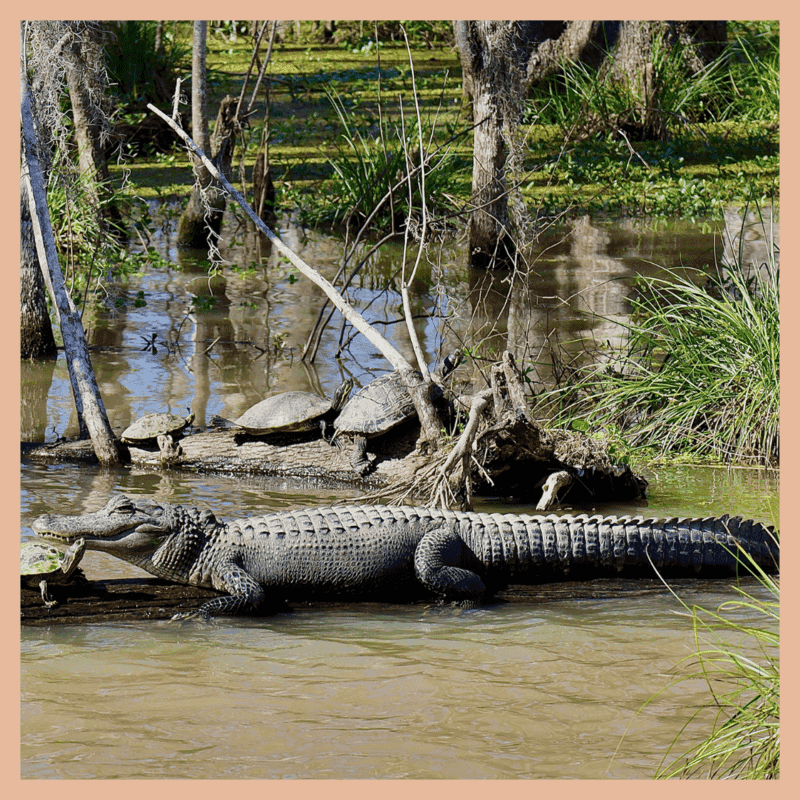
The fierce territorial battles that define spring and summer become rare autumn occurrences.
Energy conservation becomes priority number one as winter approaches. Male alligators that once fought viciously over territory now tolerate closer proximity. The hormonal aggression that peaks during breeding season naturally subsides.
This behavioral shift means autumn gators often cluster in prime basking spots without the dramatic confrontations seen earlier in the year.
For wildlife photographers hoping to capture dramatic battles, fall might disappoint. But for peaceful observation, it’s ideal.
Quiet On The Bayou Front
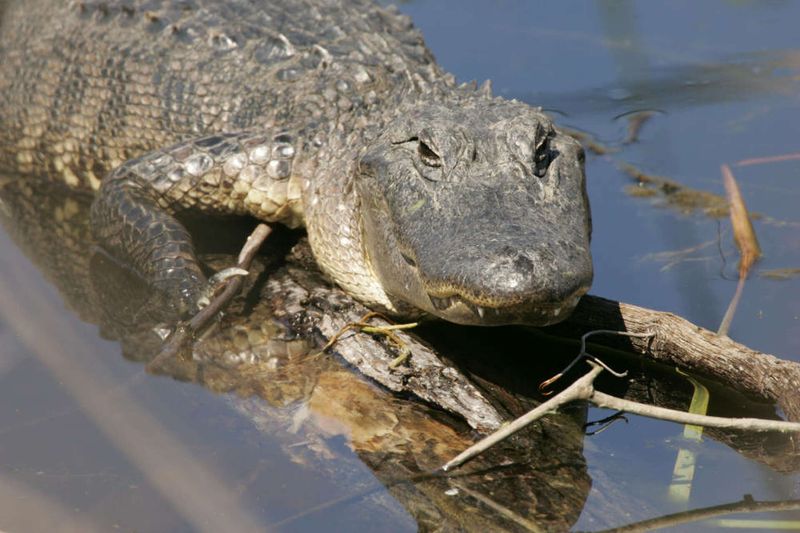
Alligators are surprisingly vocal creatures during mating season, with males producing deep-throated roars that can be heard a mile away.
These vocalizations serve to attract females and warn competing males. As breeding concludes and fall arrives, this noisy communication network goes quiet.
For night kayakers like myself, the difference is striking. Where spring paddles included a chorus of gator calls, autumn trips offer only the occasional splash or grunt.
This vocal reduction directly correlates with the seasonal decrease in reproductive behaviors.
Mama’s Boys (And Girls) Move Out
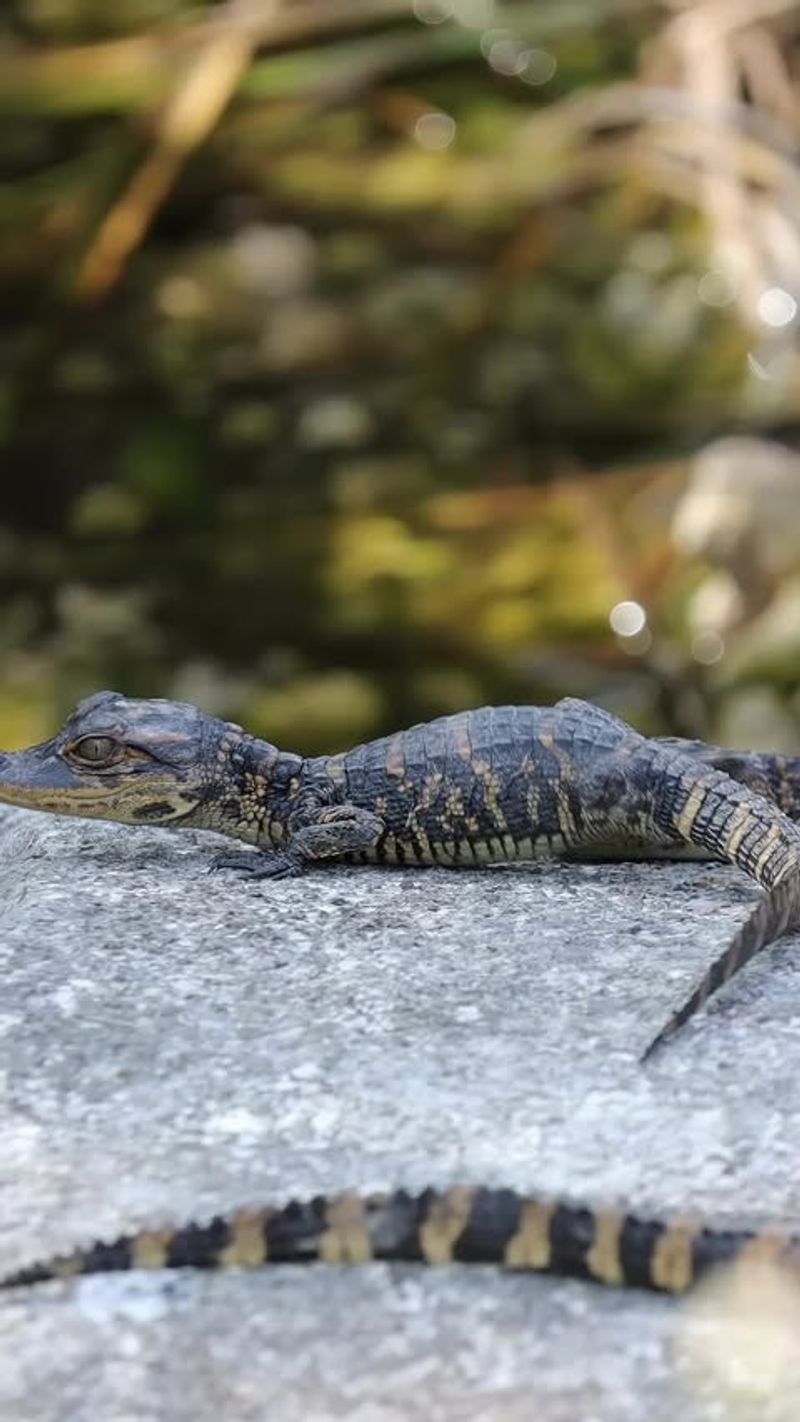
Family dynamics shift dramatically among alligators come autumn.
Female alligators are remarkably attentive mothers through spring and summer, fiercely guarding their young from predators. This protective behavior gradually relaxes as fall approaches. The 1-2 year old juveniles, now better equipped for survival, begin dispersing further from maternal protection.
This natural disbanding helps prevent resource competition during winter’s leaner times.
For young alligators, autumn marks their first taste of independence.
Burrow Buddies
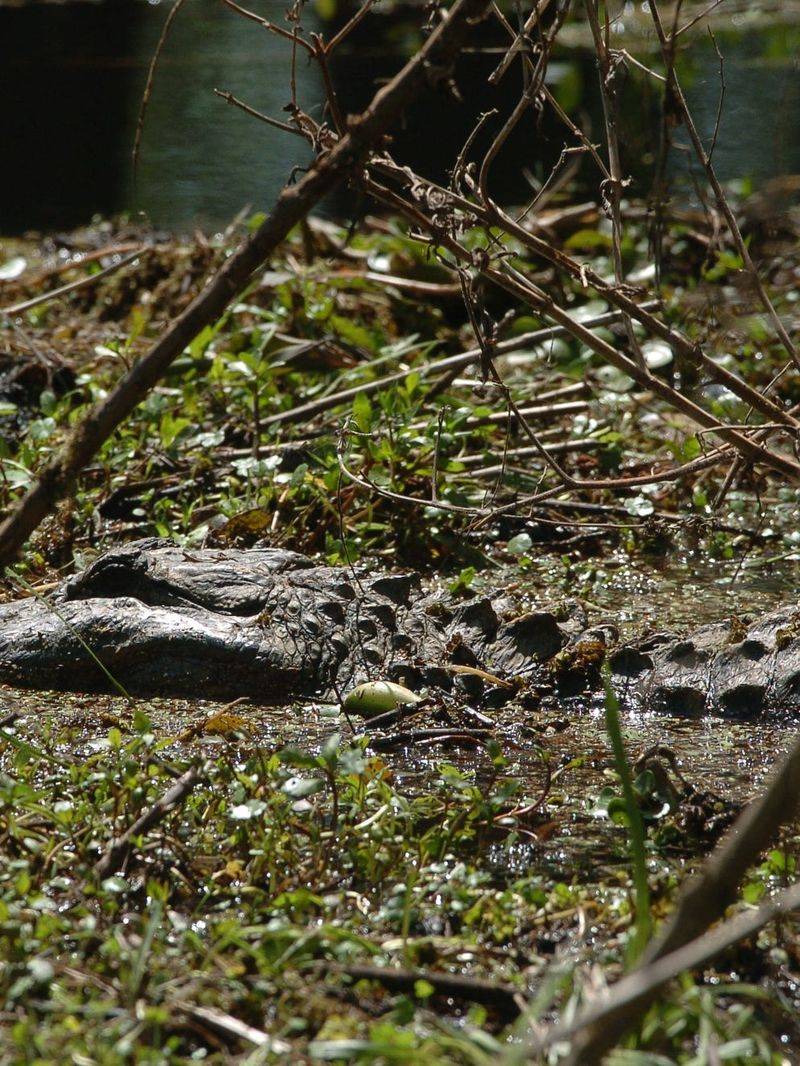
As temperatures drop, gators begin preparing winter refuges. They excavate burrows in banks or deepen existing “gator holes”, depressions they maintain in wetland bottoms. These retreats provide critical thermal protection during cold snaps.
The entrances typically remain underwater with the chamber above water level. Inside these dens, temperatures stay remarkably stable compared to open water.
By late autumn, you’ll spot fewer gators in open water as more time is spent preparing and occupying these seasonal shelters.
Hot-Cold Shuttling
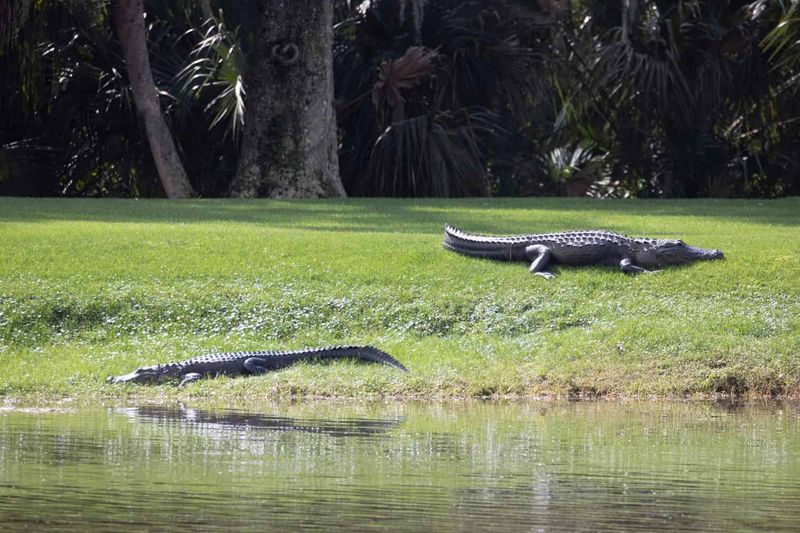
They develop an almost comical routine of shuttling between sun and water that reminds me of someone testing bath temperature with their toes.
This thermoregulation dance becomes more frequent and pronounced as autumn progresses. When body temperature drops too low, they bask in full sun.
When they’ve absorbed sufficient heat, they return to water to maintain that temperature longer.
Unlike summer’s more stable patterns, fall brings rapid temperature swings that require constant adjustment.
Seasonal Skin Changes
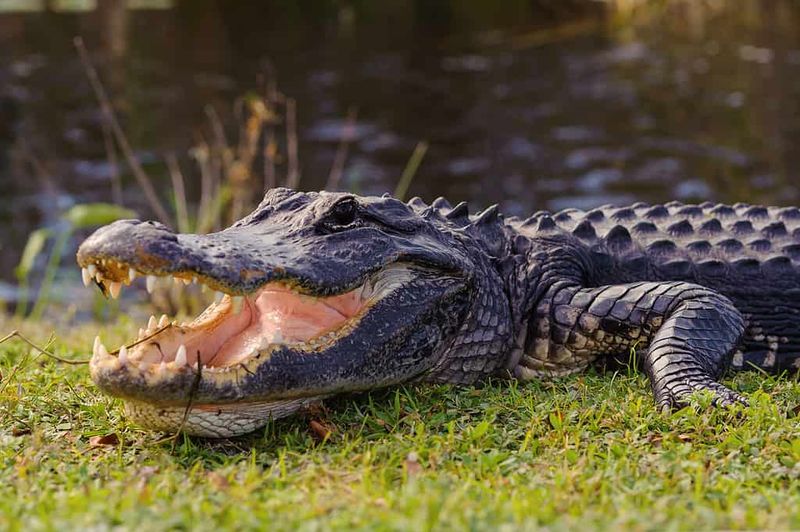
Few folks realize that alligators undergo subtle but important skin changes in autumn. I first noticed this years ago when photographing the same recognizable gator throughout seasons. His fall complexion appeared noticeably darker!
Melanin production actually increases slightly in fall, darkening their hide.
This adaptation helps them absorb more solar radiation during basking. Their skin also develops slightly improved insulation properties, with blood vessels contracting near the surface to reduce heat loss.
